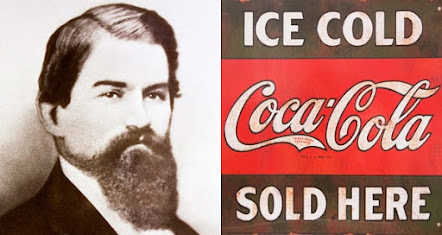7 Everyday Things That You Wouldn't Believe Were Accidentally Discovered
While most ground-breaking discoveries and inventions take place after a lot of research and experimentation, some discoveries actually happened by accident.
1) Coca-Cola was accidentally invented in 1886 by John Pemberton, a pharmacist who was actually trying to find a cure for headaches and hangovers.
Pemberton was trying to find a cure for headaches and hangovers. As a result of which, he concocted a syrup made from wine and coca extract, which he called ‘Pemberton’s French Wine Coca’. A year later, Atlanta banned the sale of alcohol, forcing Pemberton to produce a purely coca-based version of the syrup that needed to be diluted. So, he added ice-cold soda water to the mix instead of tap water. That's how this ever-popular beverage came into existence.
2. Potato chips were accidentally invented by African American chef, George Crum in 1853 who was actually trying to get back at his fussy customers who complained about the thickness of his fried potatoes.
Crum served fried potatoes to his customers but they often complained about its thickness. They demanded Crum to slice the potatoes thinner. Hoping to annoy the extremely fussy customers, Crum decided to make chips that were too thin to eat with a fork but, surprisingly enough, his customers were in love with it.
3) Match sticks were accidentally invented by John Walker, a chemist in Stockton in 1826, when he was trying to prepare medicines using wooden sticks to mix the chemicals together.
Walker used to prepare medicines using wooden sticks to mix the chemicals together. One day he noticed that the stick was coated with some chemicals and when he tried to scrap it off, it caught fire. That's how the first friction match was invented.
4) At the St. Louis World Fair in 1904, Ernest A. Hamwi, a Syrian concessionaire rolled his wafer-like waffles in the shape of a cone and offered help to an ice-cream vendor that ran out of bowls. That's how ice-cream cones came into being.
Though the first ice cream cone was produced in 1896 by Italo Marchiony, it was Hamwi who first came up with the idea. Hamwi was selling waffles in a booth next to an ice-cream corner but, because of its popularity the vendor ran out of bowls/dishes to serve them in. That's when Hamwi offered help to the ice-cream vendor by rolling his wafer-like waffles in the shape of a cone to serve ice-cream in.
5) In 1895 Wilhelm Conrad Röntgen, a German physicist was trying to understand how electricity passes through gases. And, in the process he accidentally discovered x-rays.
Conrad was trying to experiment with cathode ray tubes in his lab in order to investigate how electricity passes through gases. For the experiment he evacuated a cathode tube of air, filled it with a special gas, and passed a high voltage electric current through it. To his surprise, a screen situated a few feet away from the tube gave off a green, fluorescent glow which was odd. Because the cathode ray tube emitting light was surrounded by thick, black cardboard. Later, he used his wife, Bertha as a subject and found that the rays passed through the tissue of her hand, leaving the bones visible. The news of his invention spread like wildfire and within a year, these hitherto unknown x-rays were being used to diagnose bone fractures all over the world.
6) The heating effect of a microwave was accidentally discovered by Percy Spencer when he noticed a chocolate bar had melted in his pocket due to the microwaves from an active radar set.
Spencer was a self-taught engineer and radar specialist. He was working at Raytheon, a defence contractor company, when he noticed that microwaves from an active radar set he was working on started to melt a chocolate bar that he had in his pocket. He conducted multiple experiments and began heating other food items to see if the microwaves had a similar warming effect.
7) In 1968 Spencer Silver, a chemist was given the task of developing a strong adhesive for the aerospace industry but, he accidentally ended up inventing a weak adhesive which was later used to make post-it notes.
Spencer Silver worked at the Minnesota Mining and Manufacturing Company at St Paul, Minnesota. He was supposed to develop a strong adhesive for the aerospace industry, but he ended up inventing a weak one. However, he noticed that the tiny acrylic spheres that the adhesive was composed of was almost indestructible. It was a 'low-tack' high-quality adhesive. Even after several uses the adhesive lasted for a long period of time. Though it wasn't until 1974 that the use for his invention was found. Art Fry, his colleague needed something to mark his hymnal in church choir, and Silver's sticky paper worked like a charm










Comments
Post a Comment